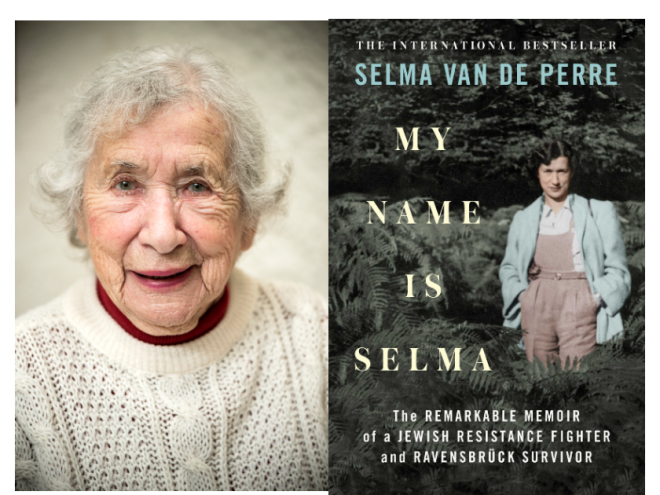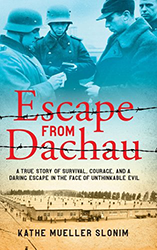The outstanding memoirs of Holocaust survivors, such as those by Ruth Kluger, Eva Schloss, Thomas Buergenthal, and Elie Wiesel, have offered invaluable accounts of peril, resilience, and resistance. My Name is Selma, the 2021 memoir of Selma Van de Perre, a much-honored Jewish resistance fighter, contains similar themes, but comes from a rare perspective in this literary genre.
In 1942, as a 20-year-old underground courier, van de Perre identified herself to fellow prisoners and enemy persecutors alike as a non-Jew in order to help stay unnoticed. She dyed her hair blonde and relied on her gentile facial features, keeping up the ruse for almost three years in concentration camps. Though she was successful in her deception, she continuously risked her physical and mental health, coming close to death many times.
My Name is Selma provides a unique overview of what European Jews experienced between 1933 and 1946, from the perspective of a Jew in disguise, one whom, in 1983, received her country’s highest civilian award, the Dutch Resistance Memorial Cross. Some themes and observations from van de Perre’s odyssey will be familiar to readers of this genre, while others are entirely new.
Familiar, for example, is her salute to the ways non-Jewish resistors in Vught, Ravensbrück, and Siemens camps joined together as “Camp Sisters.” She writes, ”We supported each other. Community played such an important part in our survival. Our friends were our family.”
Van de Perre’s insights into the ways she resisted German interrogation are unique. For example, when first interrogated, she was asked if she understood German. “’No,’ [she] said. [She] could actually speak it quite well, but denying it was an act of resistance.” When required at Vught camp to make gas masks, “the girl opposite [her] told [her] [she] wasn’t to tighten the screw too much… In this way [they] sabotaged as many masks as [they] could. Thousands, probably.” On arriving from Vught into Ravensbrück, “despite the fear and uncertainty, [she] walked toward the camp with as much dignity as possible. Keeping [her] head up was another act of defiance.”
There is much to learn from this memoir of Jewish resistance. Now ninety-eight years old, Selma van de Perre humbly regards herself as, “just one of many people who fought against the inhumanity, and did everything they could to save as many people as possible.” Her book merits wide readership and long employ in the annals of Holocaust scholarship.
Professor Emeritus of Sociology, Professor Arthur B. Shostak is the author in 2017 of Stealth Altruism: Forbidden Care as Jewish Resistance in the Holocaust. Since his 2003 retirement from 43 years teaching sociology he has specialized in Holocaust studies.




